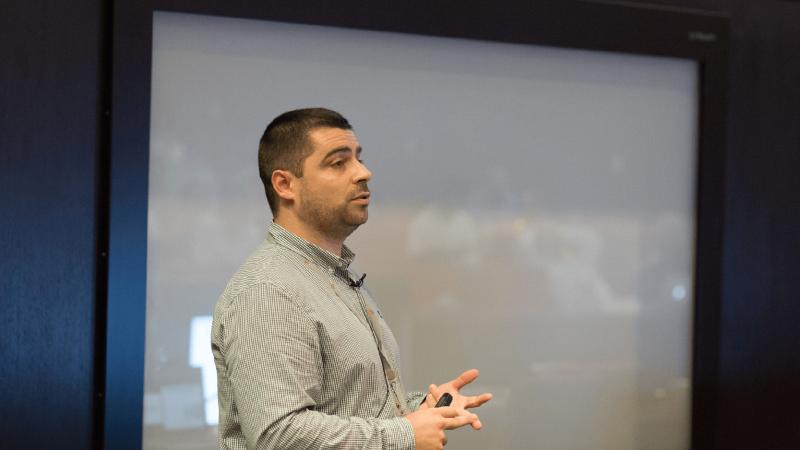© 2019 KAUST
Improving elite racing car design is an exciting application of computational fluid dynamics for KAUST’s Matteo Parsani, as he brings next-generation algorithms into the real world through a partnership with McLaren Racing.
Parsani is applying his computational and numerical expertise to help the Formula 1 team improve the aerodynamic design of their car. The project is one part of a long-term multicomponent partnership between KAUST and McLaren Racing, signed in 2018. The partnership will develop new technologies to drive forward the Formula 1 team in the short term, but everyday vehicles, such as road cars and commercial airlines, are set to benefit in the slipstream.
Parsani’s work, at KAUST’s Extreme Computing Research Center, focuses on developing novel, robust and highly accurate high-order algorithms for modeling fluid flow around objects to run in current- and next-generation supercomputer architectures. “We are pushing the boundaries of our research by applying our algorithms to an advanced object like a Formula 1 car,” Parsani says.
With Formula 1 cars separated from their rivals by fractions of a second per lap, every little detail counts when seeking a performance advantage.
“To win in Formula 1, you have to be good at everything,” explains Jonathan Neale, McLaren Group Chief Operating Officer. Formula 1 is at the cutting edge of areas as diverse as fuel design, composite materials science, hydraulics and sensor design, to name just a few. “It is not possible for us to match the depth of knowledge you have here in some of those domains,” Neale said. “Great teams and championships are made on great partnerships.”
“A Formula 1 car driving around a corner is effectively running in curved air, and that’s impossible to do in a wind tunnel and very challenging to do in computational fluid dynamics," says Neale.
Read the full article
